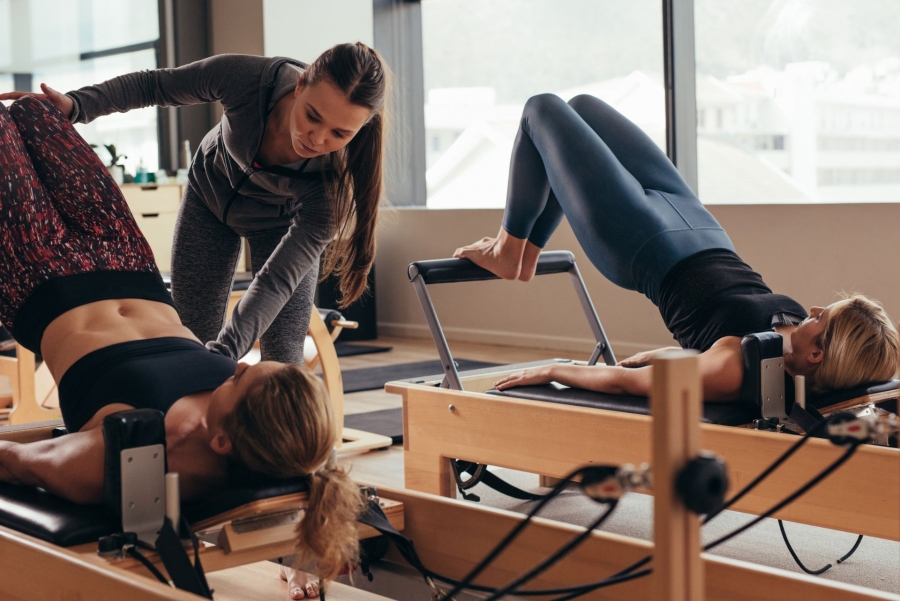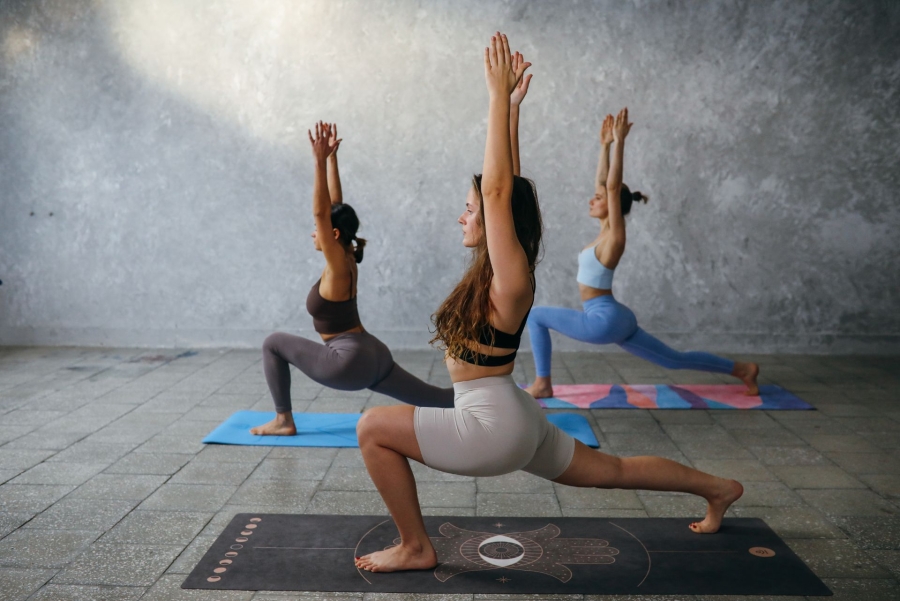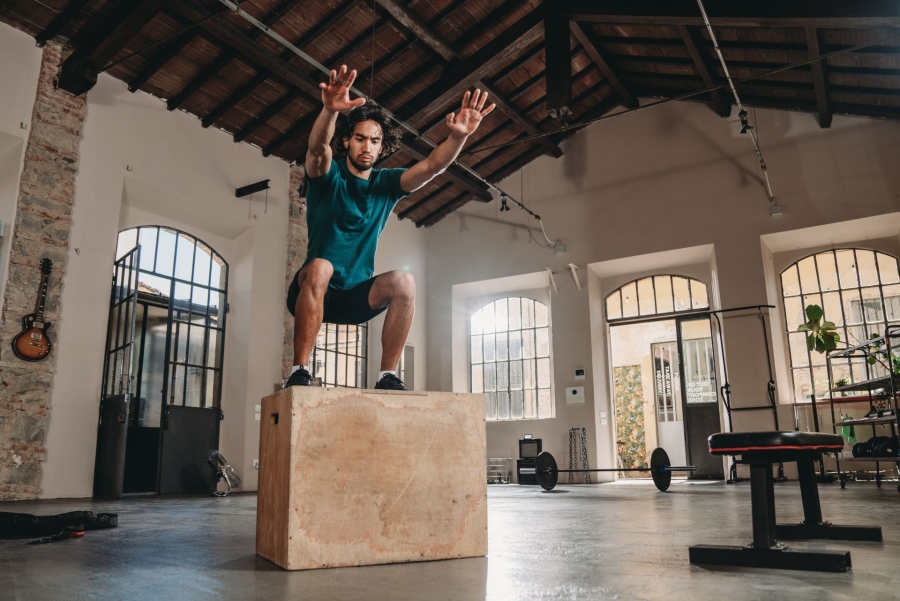Discover the latest statistics and trends in the dynamic world of boutique fitness. Gain valuable insights into the industry's growth, consumer preferences, and emerging market trends.

Discover the latest statistics and trends in the dynamic world of boutique fitness. Gain valuable insights into the industry's growth, consumer preferences, and emerging market trends.

The boutique fitness industry has undergone a popularity boom, with consumers increasingly turning to boutique fitness studios for a more personalised and unique workout experience. The latest boutique fitness industry statistics have indicated that gyms are projected to have the largest market share in the Boutique Fitness Studio industry by 2027.
Boutique fitness is a subset of the fitness industry that offers specialised workouts in small, intimate settings. These studios typically focus on a specific type of exercise and provide a high-end experience that often features top-of-the-line equipment combined with proven instructors.
As we enter 2023, the boutique fitness industry continues to be a fast-growing segment of the fitness market, driven by changing consumer preferences and technological advancements.
This blog post will explore the latest boutique fitness industry statistics and trends to provide insights into the market's growth and opportunities.
Boutique fitness is a subcategory of the fitness industry that offers specialised workouts in small, personalised settings. Unlike traditional gyms that offer a wide range of equipment and classes, boutique fitness studios focus on a particular type of exercise, such as Pilates, yoga, boxing, cycling, or high-intensity interval training (HIIT).
Boutique fitness studios provide a unique experience for consumers with intimate classes, top-notch instructors, and high-end amenities. This approach has proven popular among consumers seeking a more customisable and engaging fitness experience.

There has been a growing trend of consumers choosing boutique studios for their workout needs within the fitness industry. According to Research And Markets, the global boutique fitness studio market was valued at $49.3 billion in 2021 and is expected to reach $66.2 billion by 2026, reflecting a compound annual growth rate (CAGR) of 6.1% during the forecast period. This remarkable expansion can be attributed to several factors, including changing consumer preferences, technological advancements, and the mindfulness of fitness as a lifestyle trend.
Moreover, the continuous growth of the boutique fitness industry has led to the emergence of new and innovative business models, such as virtual fitness classes and on-demand workouts. As we move into 2023, we expect continued growth and evolution in the boutique fitness industry as consumers demand more personalised and convenient fitness options.
Key statistics provide insight into the industry's development in recent years. Here are some relevant examples and trends highlighting boutique fitness’ expansion and potential:
The global boutique fitness studio market was valued at $49.3 billion in 2021 and is expected to grow at a CAGR of 15.2% from 2022 to 2028. (Research and Markets)
The average monthly cost of a gym membership is $51. However, boutique gym memberships are slightly more expensive, averaging $90 monthly. Notably, approximately 40% of people who go to the gym pay less than $25 for their membership, despite these average costs. (IHRSA)
Some popular boutique fitness activities include yoga, Pilates, barre, indoor cycling, and HIIT and HILIT workouts. (RBH)
The average age of boutique fitness members is 30. By contrast, the average age of all gym-goers is 40 years old. Women are more likely to frequent studios focusing on yoga, barre, and Pilates, whereas men have higher membership rates at studios focusing on cross-training and boot camp. (IHRSA 2017)
The wearable market is expected to grow to 1.1 billion in 2022 while telecom technology changes from 4G to 5G. Wristwear (watches and wristbands) will reach almost 180 million units by 2023. (Statista)
Boutique fitness studios often prioritise a more holistic approach to health and wellness, emphasising community building, mindfulness, and mental health. Two-thirds of gym members prefer working out with others as opposed to alone, with live fitness classes cited as the most popular offering at the gym. (HCM)
The boutique fitness industry is expanding beyond traditional markets such as the US and Europe, with increasing interest and investment in markets such as Asia and the Middle East. (Research and Markets)

The increasing trend of urbanisation, a growing middle class, and higher disposable incomes drive the demand for gyms, health clubs, and fitness centres.
Additionally, the sedentary lifestyle of the young working-age population with sufficient disposable income has increased various diseases, creating a greater demand for boutique fitness studios. Furthermore, health clubs focus on retaining the Gen X customer segment, as they are more likely to utilise health club services and invest in gym and health memberships by offering customised service options.
The North American region is expected to have the highest market share in the global Boutique Fitness Studio market, followed by Europe. However, the APAC region's emerging markets are anticipated to experience the fastest growth rate in the coming years.
The increase in subscriptions to boutique gyms is primarily attributed to the preferences of today's millennials, who prioritise the ambience, community, and overall experience over price.
Boutique fitness centres provide a pleasant atmosphere and experienced trainers, further propelling the global boutique fitness market. However, as boutique gyms continue to expand and saturate the market, they may face intense competition and a potential decline in subscription prices. Nonetheless, the growing health consciousness, focus on body image, and rising living standards among millennials offer opportunities for market growth.
Boutique fitness studios offer a variety of specialised workouts, each with unique benefits that aim to engage every segment of consumer demographics. Here are some of the most popular activities:

The boutique space has attracted a range of established players and new entrants to the market. Here are the household names, including some European-based brands:
Equinox is a luxury fitness and wellness company that operates upscale fitness clubs, including its popular SoulCycle and Precision Run brands. Equinox operates locations in the US, Canada, and the UK.
Pure Barre is a barre-based fitness franchise that offers low-impact workouts designed to tone and strengthen the entire body.
Orangetheory Fitness is a fitness franchise that offers high-intensity interval training (HIIT) workouts, using heart rate monitors to track performance. Orangetheory Fitness operates locations in the US, Germany, Israel, Japan and several other countries worldwide.
F45 Training is an Australian global fitness franchise that offers functional training workouts, combining strength and cardio exercises for a full-body workout. F45 Training has locations in 45 countries globally.
Les Mills is a New Zealand-based fitness company that offers a range of group fitness programs, including BodyPump, BodyCombat, and RPM. Les Mills creates and distributes group fitness classes taught in over 18,000 licensed facilities in 105 countries worldwide.
Now known just as Barry's, this US fitness franchise offers high-intensity cardio and strength training workouts. Barry's operates in the UK, Canada, Italy, Sweden, Australia and the UAE.
These are just a few examples of the key players in the boutique fitness industry, with a mix of US and European-based brands. Other notable players include CorePower Yoga, Peloton, Flywheel Sports, and CycleBar.

Boutique fitness has experienced significant growth in recent years, driven by several factors:
Consumers increasingly seek personalised fitness experiences catering to their needs and preferences. Boutique fitness studios offer a range of classes and activities tailored to specific interests and goals, providing a more customised and enjoyable journey.
Technological advancements have made it easier and more convenient for consumers to access boutique fitness classes and track their progress. Many boutique fitness studios offer online and on-demand courses, allowing consumers to participate anywhere, anytime. Additionally, wearable technology, such as fitness trackers and heart rate monitors, has become increasingly popular, providing consumers real-time feedback and data on their workouts.
Social media platforms, such as Instagram and TikTok, have significantly promoted boutique fitness classes and built brand awareness. Many boutique fitness studios have developed a strong presence across these channels, showcasing their courses and instructors and leveraging user-generated content to engage with their audience.
The increasing focus on health and wellness has also contributed to the growth of the boutique fitness industry. Consumers are seeking holistic approaches to fitness and wellness, with a greater emphasis on mindfulness and self-care. Boutique fitness studios often offer a range of activities beyond traditional exercise classes, such as meditation and nutrition coaching, to cater to these needs.
Investors have recognised the potential for growth and profitability in the space with a significant increase in investment across the entire industry in recent years. This has allowed studios to expand their offerings, improve their technology and infrastructure, and increase their marketing efforts to make further headway in the industry.
Thriving in the rapidly evolving boutique fitness industry is not without its hurdles.
Here are some of its key challenges:
As the boutique fitness industry has grown, so has the number of studios and classes available. This increased competition makes it more difficult for individual studios to stand out and attract new customers.
Boutique fitness studios often have higher operating costs than traditional gyms due to higher rent, specialised equipment, and highly trained instructors. This obstacle can make it difficult for studios to achieve profitability, particularly in highly competitive markets.
Boutique fitness studios relies heavily on individual instructors to drive attendance and build a loyal customer base. It can be problematic if a popular instructor leaves, which could lead to a drop in attendance and revenue.
While boutique fitness studios offer a range of classes and activities, they may appeal to only some demographics. For example, older or less mobile individuals may find it challenging to participate in some categories, while others may prefer more traditional gym equipment and routines.
The COVID-19 pandemic has significantly impacted the boutique fitness industry, with many studios forced to close or reduce operations. The ongoing economic uncertainty and potential for future disruptions may pose ongoing challenges for the industry.

After considering its challenges, the industry’s outlook still remains on an upwards trajectory. Here are some factors that will likely shape it over the coming years:
Consumer preferences have shifted towards boutique fitness classes and experiences in recent years, driven by social media influence, changing attitudes towards health and wellness, and a desire for personalised, community-focused fitness experiences.
The evolution of tech has played a crucial role in the growth of the boutique fitness industry and is likely to continue to do so going forward. From wearable fitness devices to virtual and on-demand fitness classes, technology is enabling more convenient and personalised fitness experiences.
The boutique fitness industry has substantially developed in the US and Europe. However, there is still significant potential for growth in other markets, particularly in Asia and the Middle East.
To remain competitive and attract new customers, boutique fitness studios will likely continue diversifying their offerings, focusing on incorporating new classes, technologies, and amenities.
Consumers increasingly seek holistic wellness and health experiences, Boutique fitness studios are well-positioned to meet this demand by not only focusing on physical fitness but also emphasising the importance of mental and emotional health.
The boutique fitness sector's emphasis on personalised experiences and holistic wellness has gained traction worldwide. Despite challenges such as competition and high operating costs, the industry is delivering on its promising growth potential.
By staying innovative and adapting to evolving trends, boutique fitness studios can capitalise on the increasing demand for unique fitness experiences.
As consumers continue to seek personalised and community-focused fitness options, the boutique fitness industry is poised to thrive. Keep an eye on the latest boutique fitness industry statistics to stay informed about this dynamic and fast-growing sector.
Discover how our innovative solutions can elevate your business. Request a demo today and see the difference firsthand. Let's grow, together!
